Observer The Case Western Reserve
 Lucas Yang/The Observer
Lucas Yang/The Observer

 Lucas Yang/The Observer
Lucas Yang/The Observer
On Sunday, March 3, Case Western Reserve University’s Students for Justice in Palestine (SJP) posted to their Instagram account a letter from the university administration from Feb. 26 notifying them that SJP has received an “Interim Loss of Recognition” as a student organization. The letter, sent by the Associate Dean of Students and Director of the Office of Student Conduct and Community Standards George O’Connell and which The Observer obtained through email, references earlier communications from the university concerning potential student conduct and Posting Policy violations by SJP. Specifically, it states that SJP “engaged in [gluing] fl[y]ers to various surfaces around campus,” such as the Spirit Wall, “in violation of the University’s posting policy and student code of conduct”; additionally, it claims that SJP failed “to respond to requests from the Office of Student Conduct and Community Standards.”
This interim derecognition of SJP came as an immense surprise to the student body; not even the vice president of finance of the Undergraduate Student Government (USG) was notified of the suspension. The Instagram post has since
received over 9,000 likes and outside news organizations such as FOX 8 News and Cleveland Scene have even covered the event.
The Editorial Board contacted the university with a dozen questions in a request for comment on the recent events. This is the university’s statement in full: “On March 3, 2023, CWRU Students for Justice in Palestine (SJP) posted a letter to its Instagram account, dated February 26, 2024, from Associate Dean of Students and Director of the Office of Student Conduct & Community Standards to student representative of CWRU SJP in which they were informed of CWRU SJP’s Interim Loss of Recognition. This letter also included steps for CWRU SJP members to take for CWRU SJP to be considered for reinstatement of organizational recognition. Additional facts are outlined in that letter, which is attached.” The university did not comment as to the reason for requesting names of specific members involved in the alleged posting of flyers, which was one of their conditions for reinstatement.
Nevertheless, some student members disagree about the organization’s involvement in the postings. As one student responded to The Observer, “I would like to make this abundantly clear. SJP as an organization did not organize the
postings of the flyers,” calling into question the university’s response.
At a USG meeting on Tuesday, March 5, Peter Whiting, the interim vice president of student affairs, stressed that “[i]t was ultimately the failure to respond in the conduct process that made us take the step to the interim suspension.” However, this statement blatantly ignores the real and legitimate concerns that students feel toward the administration—and these recent actions will only further damage the already strained relationship between students and administrators. As a fellow student organization, The Observer recognizes these worries and stands in full support of SJP’s right to freely express its beliefs.
It became abundantly clear throughout the meeting that students all across campus do not trust the administration. In a discussion regarding the university’s request for a list of SJP’s membership, Whiting hoped that students could trust USG Advisor and Director of Student Activities and Leadership Marc Hartmann to keep the list confidential and not share it publicly. One student said in response, “I don’t think I can put that trust in [Hartmann] and I don’t think the rest of the student body can either.”
The administration has slowly been creating distrust in the cam-
pus community over the past few years. “The thing is, [collaboration] is a two way street,” one student said in the meeting. “[W]e can not have that trust in the administration if certain members don’t do their part in maintaining that trust. If SJP is expected to collaborate, then I believe it is about time the administration does something to make up for what they have done in the past.”
This trust and collaboration were broken when, on Nov. 9, 2022, President Kaler sent out an email calling the passing of Resolution 31-15 by the USG “profoundly anti-Israel and anti-Semitic” and a vote for the resolution “clearly a vote against Israel and an aggression toward the Jewish members of our community.” In that one instance, Kaler implicated the entire student body in an attack on an entire nation and faith, and his words opened a chasm between students in the classroom and administrators in the boardroom.
More recently, the administration intimidated the LGBT Center for its support of SJP’s walkout in protest of the university’s stance on the conflict. In the subsequent months, the administration still has not learned. Continue
April 10, 2018
call for Case Western Reserve Uni versity to “divest from all holdings with companies involved with oc cupation of the Gaza Strip and West Bank.” It is introduced by Un dergraduate Student Government (USG) Treasurer Tim O’Shea and representative Andrew Thomp son. The original introduction date would coincided with the Jewish holiday of Passover, leading to a Change.org petition and a delay in its introduction. After considering moving the resolution to April 10, USG’s executive committee then pulls it all together from its agenda.

At the General Assem bly (GA), through the Open Forum, the resolution is formally introduced. How ever, a two-thirds major ity of representatives elect to withhold the legislative proposal. The bill’s spon sors claim this is unconsti tutional and without prec edent.
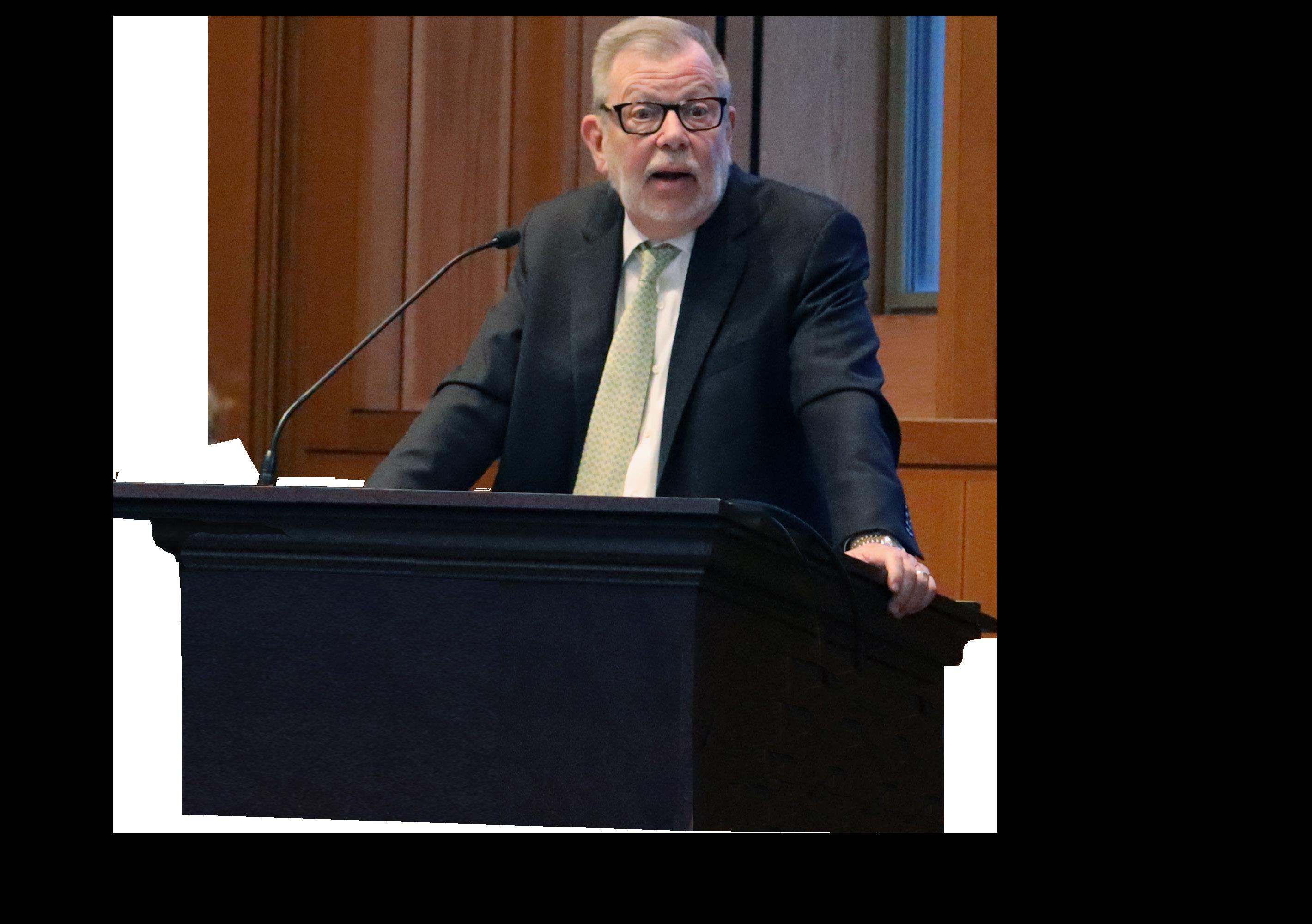

Sept. 6, 2022
duced comes in an email from the Vice President of Communications regarding the GA. It is also discussed on Sept. 20, 2021 before being pushed back until the Nov. 8, 2022 GA.
Nov. 9, 2022
President Eric Kaler condemns Resolution 31-15, calling it “naïve,” “profoundly anti-Israel and anti-Semitic.” Local news outlets catch wind of this email, propelling CWRU into the national spotlight.
Oct. 9 2023
Two days after the start of the Israel-Hamas war, Kaler releases a statement expressing his “condolences to all those affected by the tragic loss of life and the human suffering resulting from the violence occurring in Israel and Gaza.”
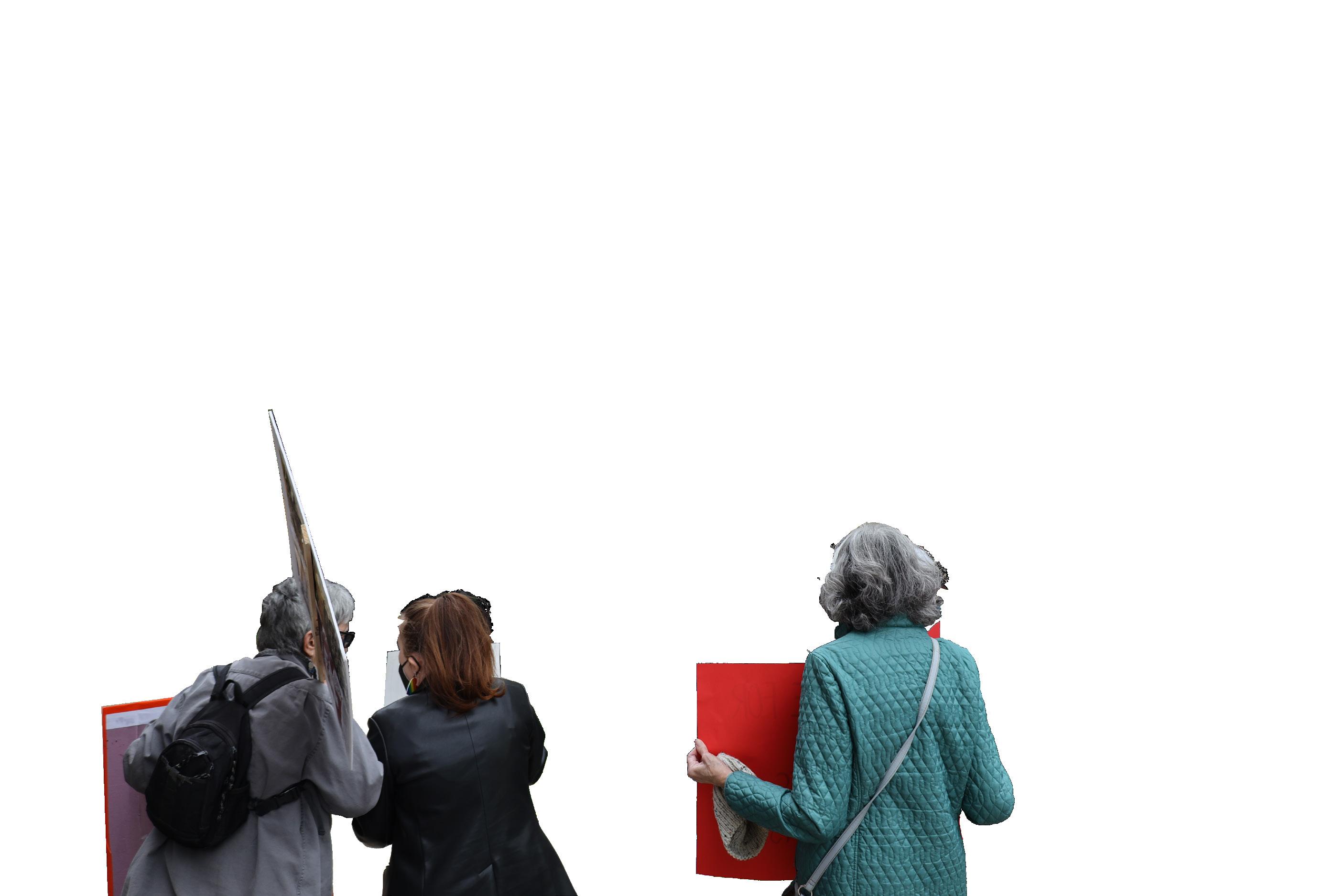
Later that same week, Kaler writes to the uni versity community to acknowledge “the level of terrorist violence by Hamas against Israel” and his commitment to “join with many in our com munity in a public denunciation of Hamas that will appear in this Sunday’s Plain Dealer.” On campus, many push back, saying that he did not properly acknowledge Palestinians.

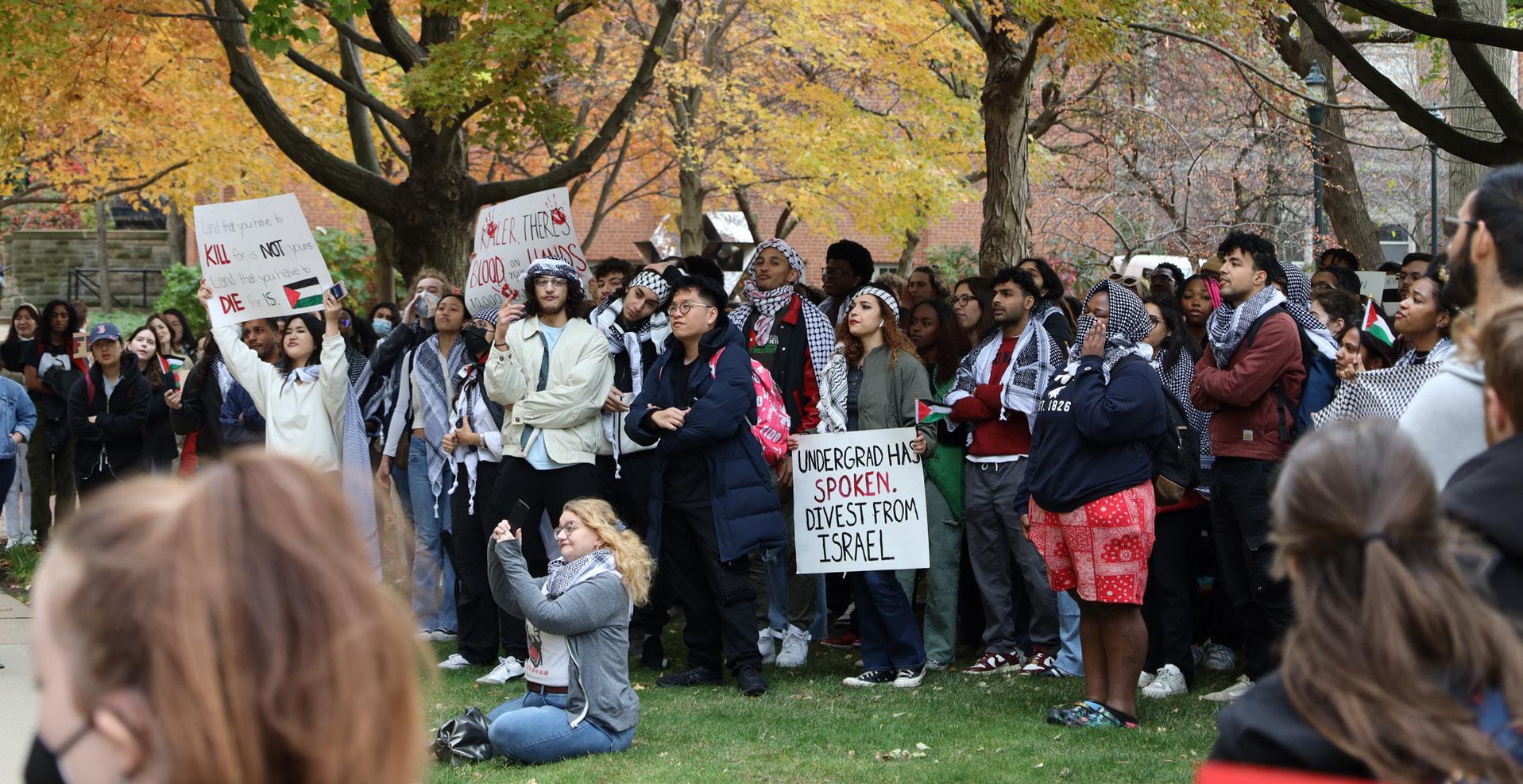

Students for Justice in Palestine (SJP) announces a walkout with the CWRU LGBT Center as a sponsor. The LGBT Center pulls out that evening to much outcry and speculation as to why they were forced to withdraw their support. While the university claims it was an “inadvertent miscommunication,” organizers see it as an intimidation technique.

Shortly after the walkout, Kaler releases another statement that is “endorsed by more than 40 of our Distinguished University Professors.” He notes there is “no tolerance for antisemitism, Islamophobia, racism or hatred of any form at

The Office of Student Conduct, and later Interim Vice President of Student Affairs Peter Whiting, claims that SJP members posted flyers to the Spirit Wall found on Feb. 2. Members of SJP deny their organization’s involvement in this posting policy violation. Further posting policy violations are claimed by the university in the days proceeding, including posters on the windows of Adelbert Hall.
USG leads an open executive meeting to discuss student reactions and the process of SJP’s suspension. At the meeting, students press Whiting about their suspension while voicing their distrust in the actions and steps that led to it. Several points brought up are that of a double standard against SJP and the timing of these notices arriving during an exam week.
On March 2 at 7 p.m., Case Western Reserve University’s Maltz Performing Arts Center hosted Varsity Vocals’ 2024 International Championship of Collegiate A Cappella (ICCA) Midwest Quarterfinal in Silver Hall, welcoming a total of 11 diverse and thoroughly enjoyable a cappella groups and boasting students from even more college campuses across the Midwest. Over the course of the three-hour event, CWRU groups Case in Point and Dhamakapella both dazzled the crowd and took home prestigious awards, with Dhamakapella even advancing to the March 16 semifinals, where they placed third. The ICCA Quarterfinals represent a culmination of passion for so many talented, young individuals who have labored for months on end on ten-minute arrangements, creating deeply woven families within their musical groups.
With 11 acts competing with one another using only their voices, the array of sounds that the judges and audience experienced throughout the quarterfinal competition were invigorating, to say the least. Song choices ranged from well-known pop hits such as Bruno Mars’ “Grenade” or Destiny’s Child’s “Survivor,” to more indie and moody tracks such as Lake Street Drive’s “Hypotheticals” or Hozier’s “All Things End.” The Dy-
namics, a newly formed experimental group from Ohio University, even themed their set of songs completely around Halloween. With mind-melding beatbox and vocal mixes, as well as entrancing choreography, the night ended up being about far more than just the music.
Once every team had left their hearts onstage and the judges began to decide who would advance, CWRU treated the audience to an extra three performances from a few of CWRU’s dance teams. Spartan Tappers, CWRU Nritya and CWRU Naadam each performed a set for the audience, all of which involved intricate steps, laser focus and storytelling that had the audience erupting into cheers.
Once the exhibition acts had finished, all 11 a cappella groups were called back onstage, and the awards were announced for Best Soloist (Purdue Soundtracks), Best Beatbox (Dhamakapella), Best Arrangement (Dhamakapella) and Best Choreo (Kent State’s Vocal Intensity). Then, finally, came the awards for third, second and first place, which were awarded to Case in Point, Vocal Intensity and Dhamakapella, respectively. With the first and second place winners advancing to semifinals, CWRU’s very own Dhamakapella competed again over spring break, where Ani Raghuvir mentions that the group “had a great time performing [and] watching some really talented teams and bonding together.” Placing third in
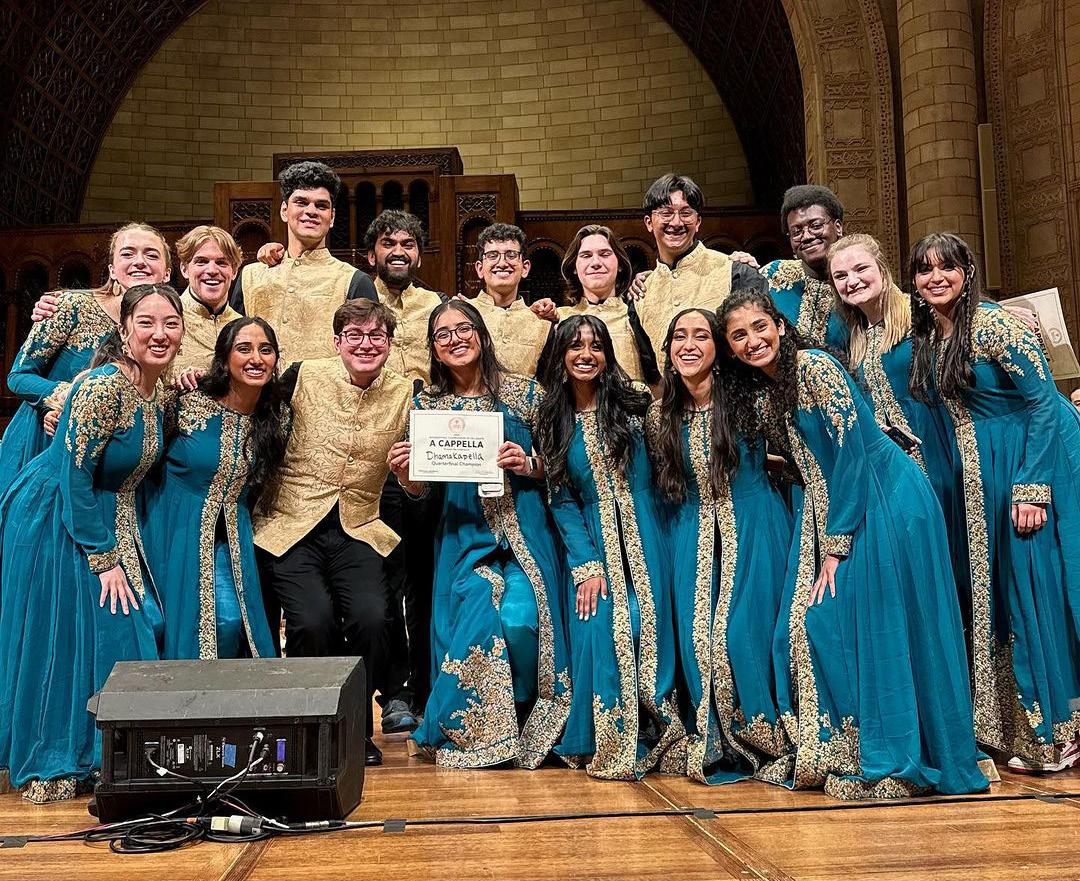
CWRU’s Dhamakapella places first in Varsity Vocals’ 2024 International Championship of Collegiate A Cappella after wowing the audience with a sensational performance.
Courtesy of Dhamakapella
the semifinals, Dhamakapella ended their ICCA run for the season, but not without providing a sensational performance for each of their captivated audiences.
When observing any of the performing groups from the night of the
ICCA Quarterfinals, the overwhelming love each team has for their members is unmistakable. The sense of community that manifests when all of these visionary young artists are brought together is more than palpable—it is contagious.
“The Play That Goes Wrong,” a humorous satire of theater productions, returned to Playhouse Square in early March as a part of its U.S. Tour. The show, while confusing to explain, is beyond hilarious as it uses stunts, special effects and sometimes just plainly crude humor to produce a wild viewing experience.
The show itself pretends to be a real show called the “Murder at Haversham Manor.” Yet the audience gets to see some of the inner workings of the show, most chiefly the backstage crew —who are all actors in the production of the show playing crew characters— doing their chaotic activities. The show opens with the lights still on and the backstage actors making last-minute adjustments to the set, even calling up a random audience member to help hold a mantelpiece as it gets duct taped on.
“Murder at Haversham Manor” itself starts with Charles Haversham lying dead on his couch where the butler Perkins finds him unconscious. Scared, he alerts the rest of the house. Thomas Colleymoore is the first to arrive on the scene, the overprotective brother of Charles’ fiancée Florence Colleymoore. While she appears to be heartbroken at first, she quickly reveals to the audience that she was having an affair with Cecil Haversham, Charles’ brother. They call the police and Inspector Carter, a rigid, strict actor who attempts to investigate the crime, arrives. When conducting witness interviews, he hears a gunshot and sees Cecil shot dead after he was
accused of being the murderer due to the aforementioned affair. With paranoia spreading that the murder was one of the individuals in the house, the first act closes.
The second act opens with the investigator attempting to figure out what is going on. There is drama over a last will and testament, which leaves all of his fortune to Perkins. Later the gardener of the residence, played by the same actor who played Cecil, arrives and with Perkins discovers the truth: The murders are all staged, and are in fact a large conspiracy by Cecil and Carter to get money from him. On cue, Charles reappears alive and well, brandishing a weapon.
That is the best reconstruction of the plot of the story in the story. That first layer of story, though, consists of a series of bits and gags where the show just becomes a trainwreck. At the beginning of the show, the bits were more subdued, with backstage crew frantically running around, things falling down and other items getting lost. As the show progresses, however, these bits become more intense. For example, crazy stunts are used to prop up the body of Florence’s actor, who passed out due to a heart attack. A member of the backstage crew must fill in, and once the original actor returns to good health, the crew member refuses to give up her spot. There is also a large amount of set destruction that occurs, including things falling off of walls and entire floors collapsing.
All of that is combined with various individual comedy bits, where the actors within the play would get to show off their own personalities and antics and do a little improv. For instance, the actor playing Perkins would frequently have to read large compound words off of his hands. Cecil did little jigs and dances. There are also plenty of pop culture references in the script for the
entire cast to work with.
Overall, this play had a fun and creative concept that fully immersed itself in silliness and absurdity. Although tightly scripted, it allowed its actors the freedom to improvise as necessary and create some of the funniest moments in the show. In addition to their acting talent, the physicality of the actors’ performances cannot be understated. The complex stunts were technically excellent and hilariously performed. The physical comedy was also greatly helped by the exceptional set. At first glance, it looks ordinary, but its genius is slowly revealed as it carefully and precisely begins to fall apart. Watching the set crumble almost felt like watching a magic show, with the audience left spellbound and wondering how it works. Interactions with the audience and frequent fourth wall breaks made the show feel more immersive and helped keep the audience engaged in the premise.
However, this level of engagement seemed to confuse certain audience members who started to speak out in inappropriate places during the show. These interruptions broke up the flow of the performance in a cringy way, but the actors did a terrific job transforming these uncomfortable moments of heckling into delightful nuggets of humor. Although the script and performances were largely hilarious, some of the gags, especially the physical ones, had a tendency to run past the point of amusement and into awkwardness and boredom. Timing and momentum are incredibly important in a successful comedy, and the select overused and lengthy jokes made the pacing choppy.
But overall, the show was an immensely entertaining and funny way to spend an evening, and one we would highly recommend to Case Western Reserve University students when the show comes back through Playhouse Square.
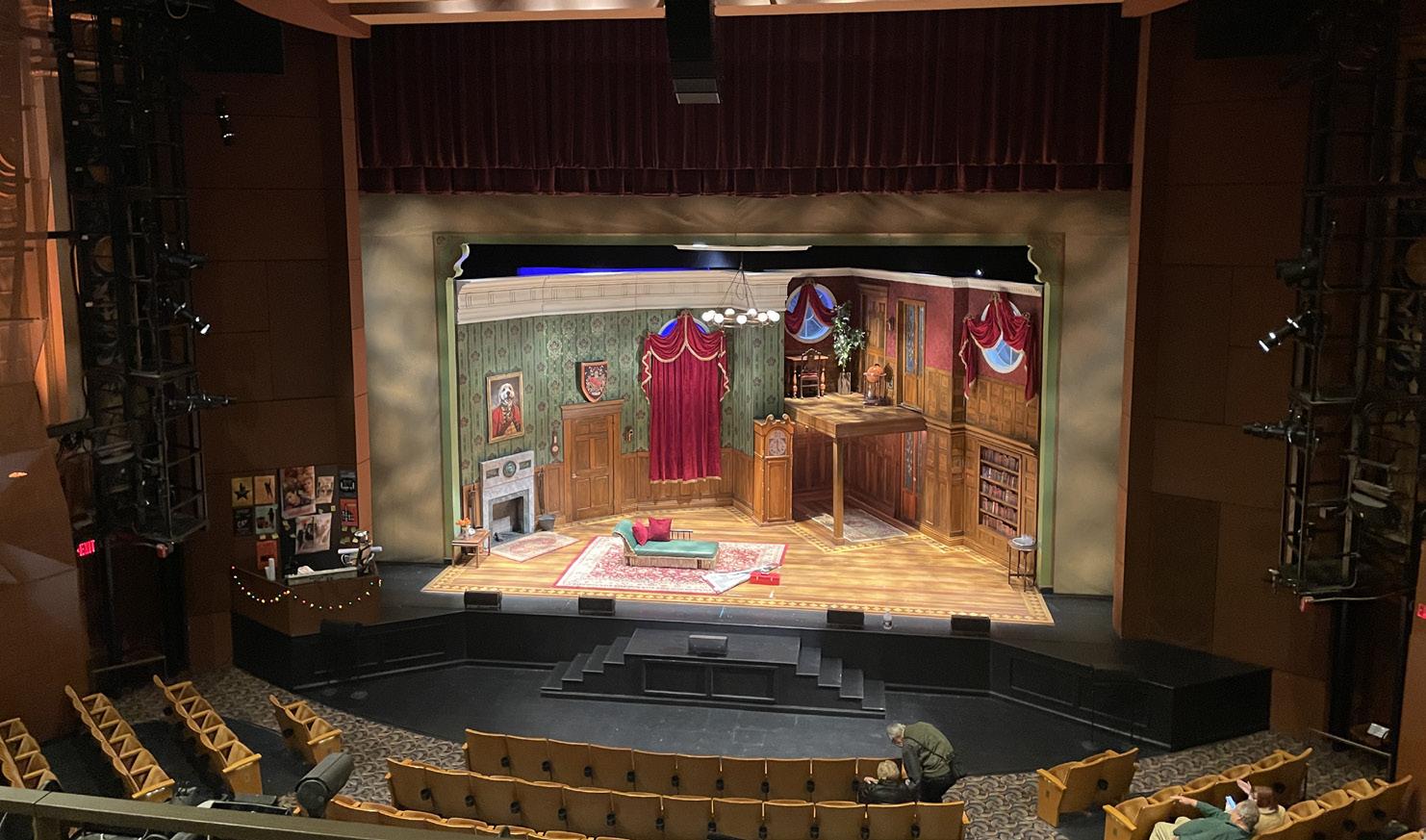
The set in “The Play That Goes Wrong” gradually breaking down throughout the show, coupled with exceptional writing and physical comedy, adds to the pure hilarity of this play.
Zachary Treseler/The Observer
Throughout the long history of the Marvel Cinematic Universe (MCU), female characters have taken the franchise by storm. While Phase 3 phased out a few longstanding icons and Phase 4 introduced new ones chronicling the history of those before, “The Marvels,” which is the third film of Phase 5, brings heroines together in quite the showstopping spectacle.
(Zawe Ashton), the antagonist and leader of the Kree empire, obtains early in the film. As to be expected, Dar-Benn seeks the power of both to grant her full control of the electromagnetic spectrum.
The film parallels the tone of “Thor: Love and Thunder”—in other words, overly humorous and lacking depth. A bold statement, but one shared by many critics who find MCU to now be catering towards younger audiences despite historically mature content—whether it be the questionable cinematic effects, usage of songs like “RATATA” by Skrillex, Missy Elliott and Mr. Oizo and “Memory” from “Cats the Musical” during action-packed scenes or Kamala’s frequent interjections reeking of naivety. Nick Fury’s (Samuel L. Jackson) entertaining exclamations, however, are always emphatically received as
and Carol’s relationship. Rambeau is emotionally pained by the memory of “Aunt Carol” leaving both her and her mother behind when she was just 11 years old, and thus distances herself from Captain Marvel, who desperately seeks to reconnect with Monica. Kamala’s happy-go-lucky attitude is seemingly enough to repair their relationship by the end of the film, but the pacing of this development acutely lacks practicality.
The team is composed of Carol Danvers as Captain Marvel (Brie Larson), Captain Monica Rambeau (Teyonah Parris) and Kamala Khan as Ms. Marvel (Iman Vellani). Their individual MCU origin stories are explored through earlier releases: Carol obtains energyabsorptive powers through a DNAaltering blast in 2019’s “Captain Marvel,” Monica experiences an extra-dimensional collision with the hex shield of Wanda Maximoff (Elizabeth Olsen) and acquires the ability to see light energy in 2021’s “WandaVision” and in 2022’s “Ms. Marvel,” Kamala must navigate high school with the weighty caveat of discovering she can turn light into physical matter.
In “The Marvels,” originally released in theaters on Nov. 10, 2023 and directed by Nia DaCosta, all three superheroes join forces with their light-based powers, albeit unintentionally, swapping places whenever their powers are used simultaneously. The movie’s centerpiece artifacts are the Quantum Bands, one of which Kamala owns and the other which Dar-Benn
exhibits with her powers—and life itself—is apparent. She lacks restraint and openly shares her extravagant dream of joining the Avengers one day. Luckily, Monica and Carol, in spite of their quarrels, can both be counted on as her mentors. “The Marvels” surprises us with a guest appearance from South Korean actor Park Seo-joon, known for his hit performances in series’ like “Hwarang” and “Itaewon Class,” who plays Prince Yan on the planet of Aladna. Fans can also delight in the showcasing of the beloved Valkyrie (Tessa Thompson) and infamous MCU Flerken, Goose.
Overall, viewers may be disappointed considering the high-held expectations for a female trio exuding such potential in both their powers and character arcs. It’s difficult to pinpoint exactly why MCU Phase 5, and even Phase 4,

his temperament remains consistent throughout the MCU, and fortunately doesn’t change in “The Marvels.”
Certain “multiversal” plot elements are oddly reminiscent of those successfully manipulated in 2023 Best Picture Winner “Everything Everywhere All at Once.” Unfortunately, their use seemed far less appropriate for the purposes of this superhero film. What’s more, the Kree-Skrull conflict spanning thousands of years since its initial infliction lacks any sort of resolution. As MCU fans may be aware, removing one leader from the equation only exacerbates the conflict further down the road. “The Marvels” itself is proof of that. Additionally, the movie barely scratches the surface of Monica
However, there is credit to be given with Captain Marvel’s infamous introduction as “The Annihilator,” which complicates her status as the “renowned superhero” of the galaxy. The well-established relationship she has with the Skrulls, commencing in “Captain Marvel” and persisting largely due to Fury’s efforts, is tested when the Skrull race is threatened by obstructive motivations centered around Captain Marvel, who they’ve held in the most superior of regards. Audiences can sympathize with the Kree’s perspective as Hala, their advanced planet, is unveiled as entirely stripped of its natural resources. “The Marvels” drills a crucial lesson: Where victory is won, destruction also occurs.
In terms of casting, Zawe Ashton’s performance as Dar-Benn is outstanding. Having to fill the shoes of her predecessor, Ronan the Accuser, was certainly no easy feat. Ashton instills a borderline thrilling type of fear in the audience through her commanding, confident and impassioned demeanor. Iman Vellani portrays Kamala’s young age of 16 well: the relative inexperience Kamala
films have been lacking relative to the rest. The widely accepted postulation is that “Avengers: Endgame” marked an unofficial resolution to what would be the peak of MCU, although cinematic verdicts for “The Marvels” alone may be enough to reconsider if such a theory offers the sole explanation. Regardless of opposing criticisms, MCU fans will be excited to see some of their favorite characters together on-screen as the three fight against Dar-Benn in a wholly interdependent fashion.
“The Marvels,” as well the majority of MCU’s releases, are now available for streaming on Disney+. Keep your eyes peeled for the next Phase 5 film, “Deadpool & Wolverine,” set to hit theaters on July 26.
Your sign as a CWRU parking lot
Aquarius
Behind top of the hill dorms
Pisces Veale garage Aries
By Crawford Hall
Taurus
The Clarking lot
Gemini
By the Den by Dennys Cancer DiSanto Field
Leo Stephanie Tubbs Jones
Virgo Behind Leutner Commons
Libra
Across from Fribley Commons
Scorpio
Next to the new SRV dorms
Sagittarius Near Triangle Towers
Capricorn At Maltz Performing Arts Center Weekly Horoscope


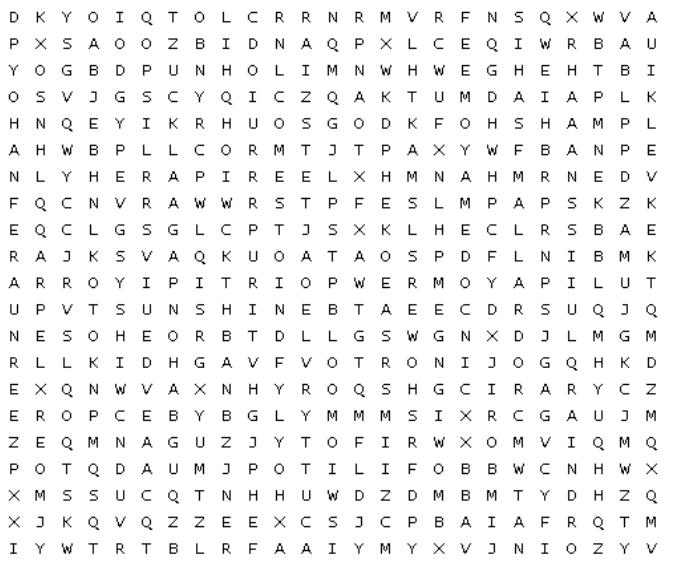
bloom earthday mallard passover raindrop showers sunshine

bluejay easter melting peonie ramadan squirrel swallow


Tyler Vu/The Observer
cincodemayo holi mothersday picnic robin stpatricksday tulip


Compilation of out-of-pocket things heard across campus
"Ooooo that was a nice little sniff."
"They're goo goo gah gah for each oth.er"
"I slept with him a month longer than I wanted to because his cat was cute"Thwing
"Why is there a twink on the box?" - UMB Office

"I believe in student voices until I read YikYak and then I think all of you need to vbe silenced." - Khushali
"Is that a chicken?!?" (It was a goose)
"If I drink anymore water I will piss my pants."
"Yeah, I liked 'Spiderverse ' more than this movie ('Oppenheimer')."
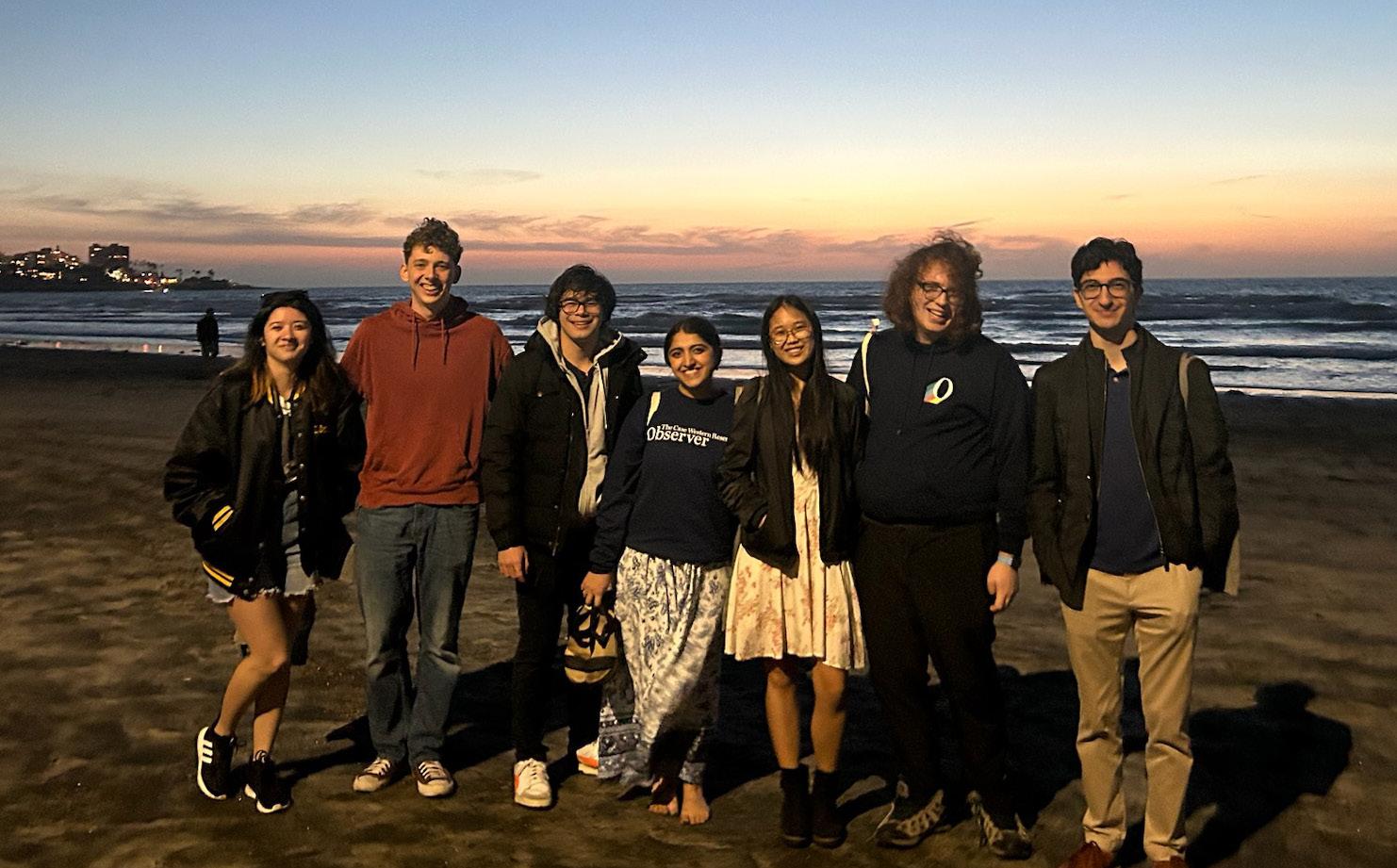
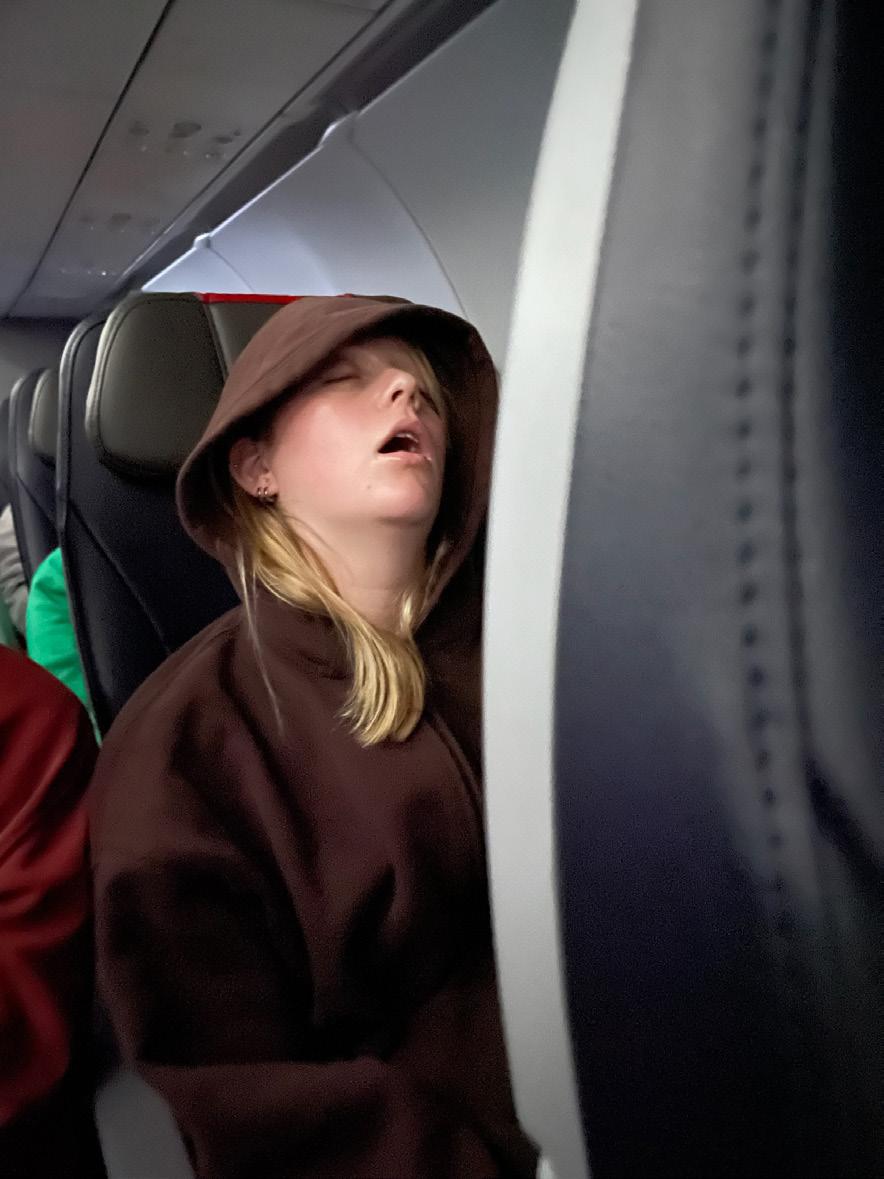
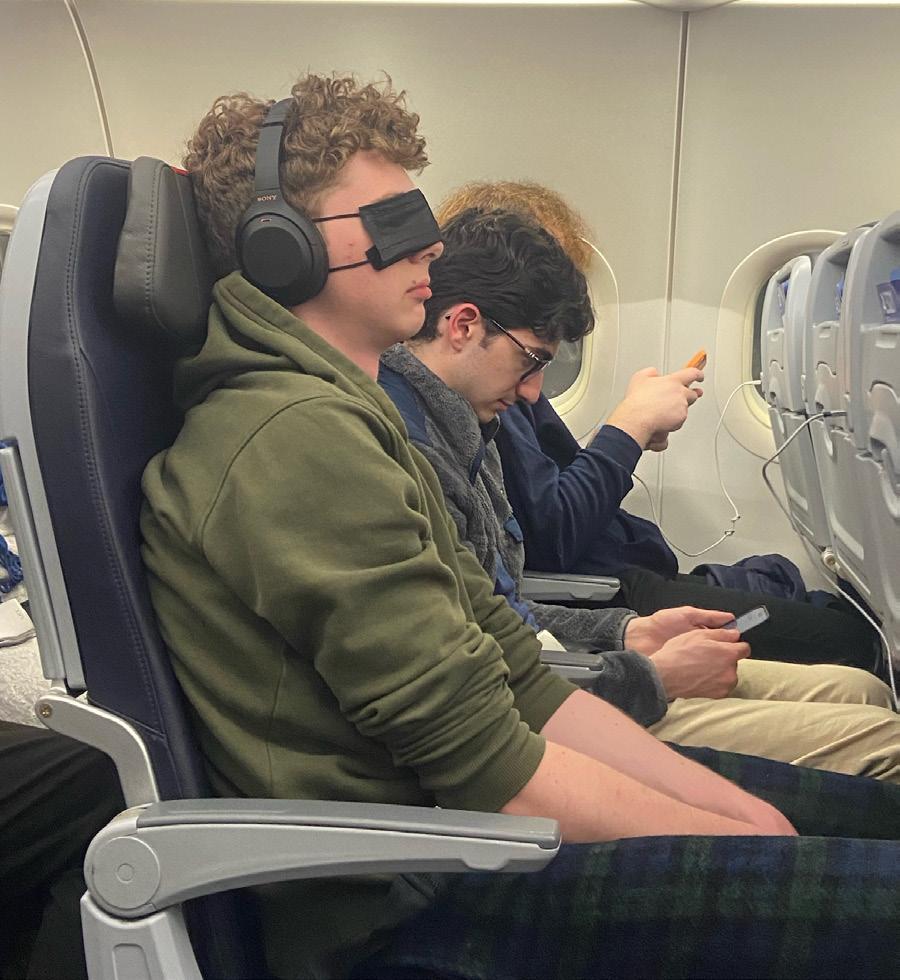
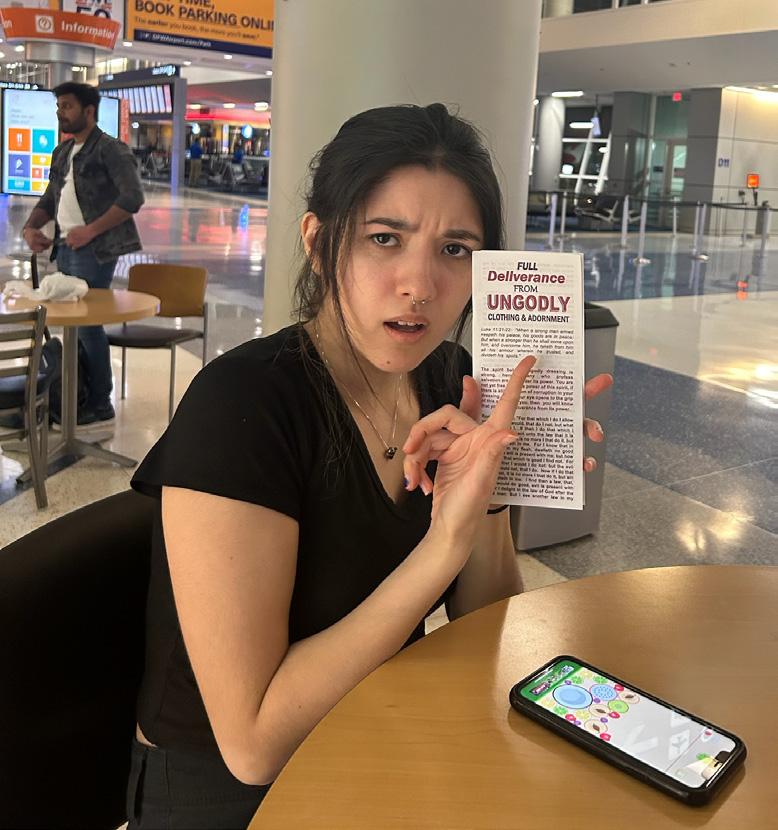

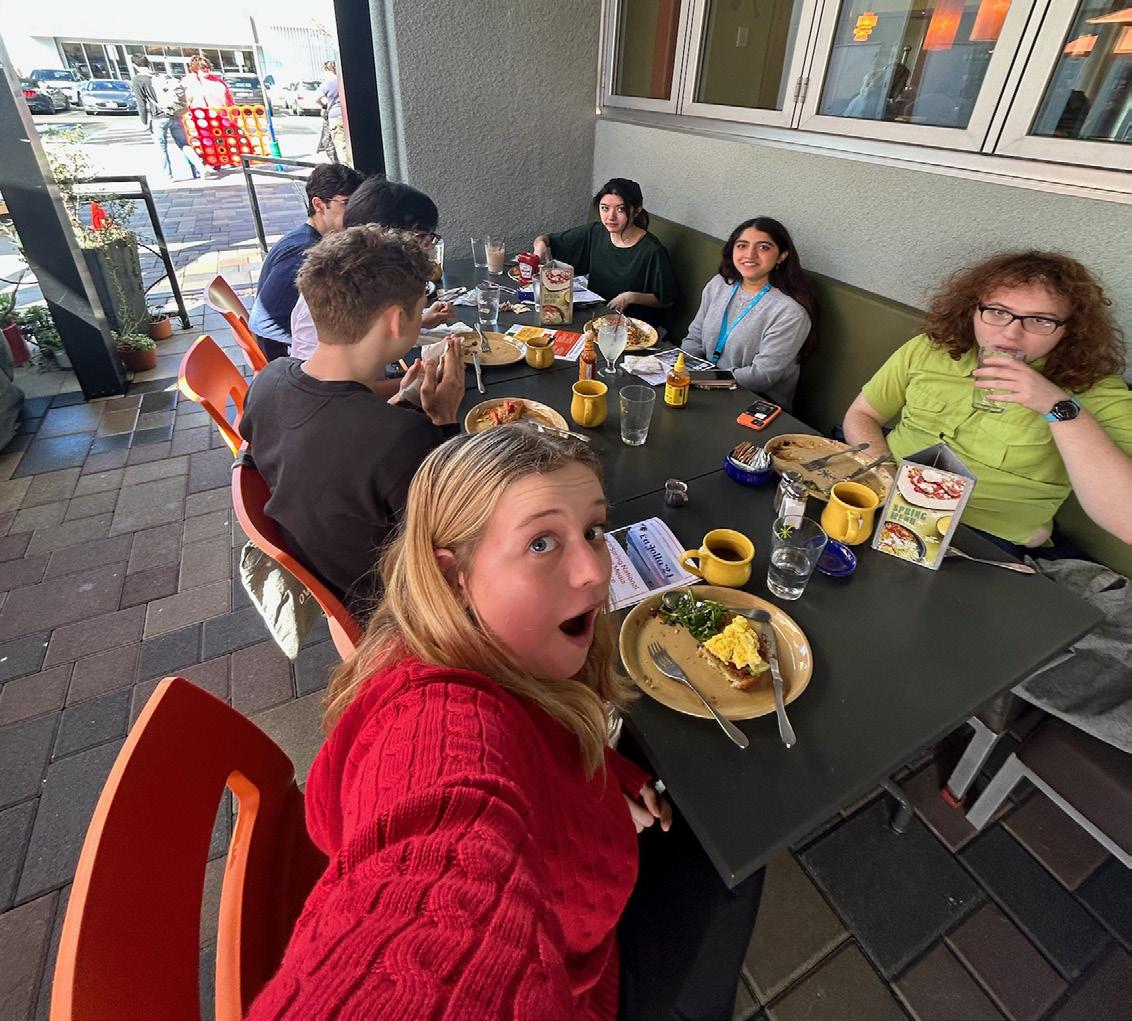
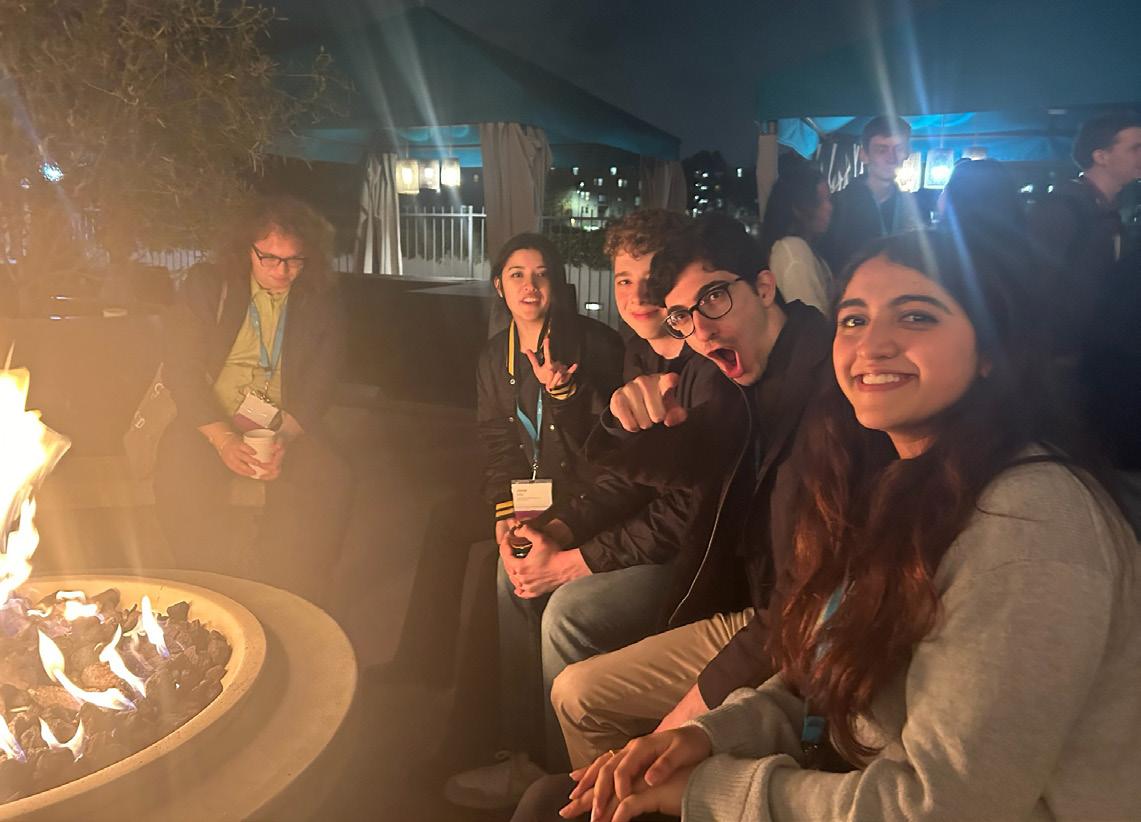
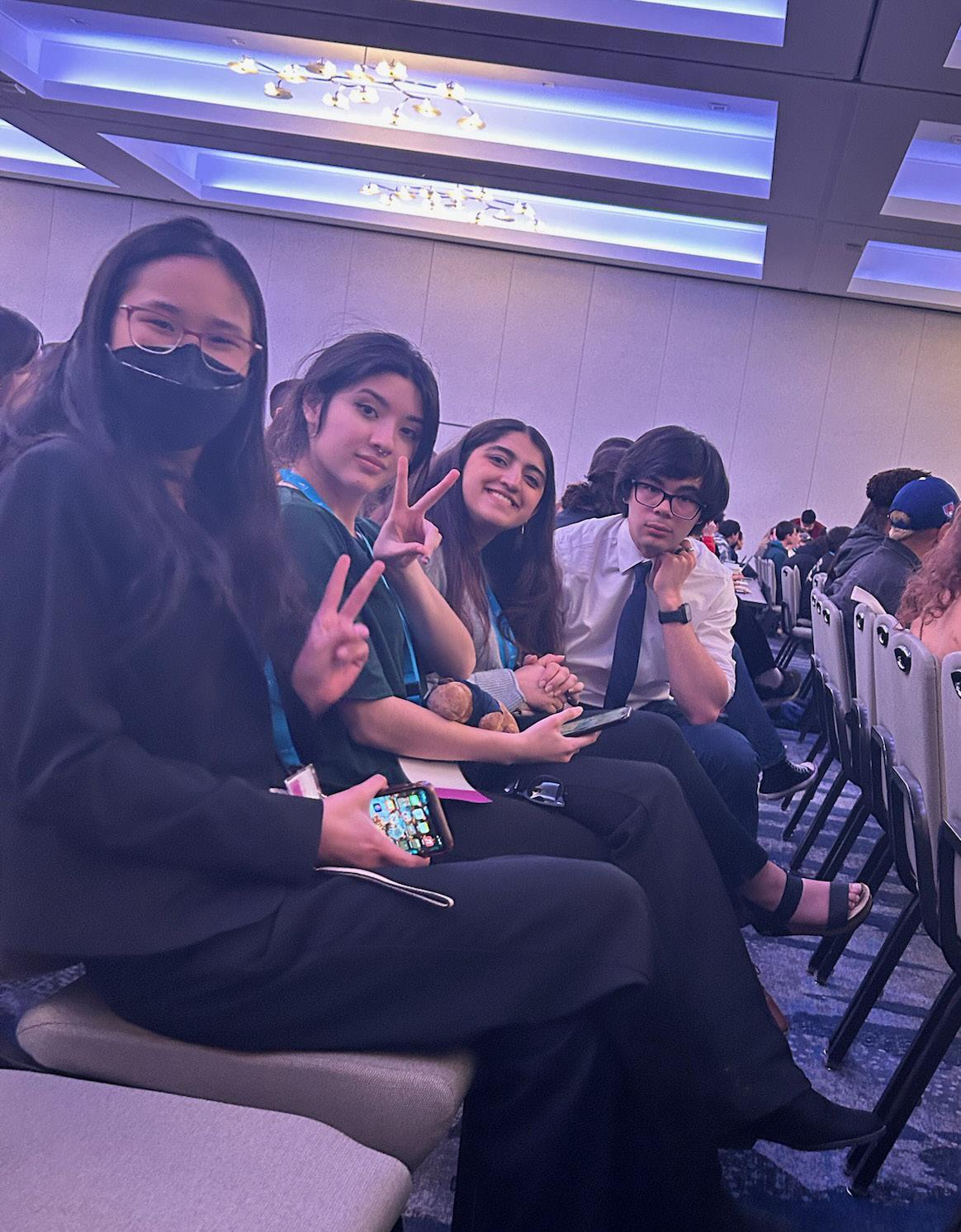



Let’s start with a little history about body positivity: It is rooted in 1960s fat acceptance activism and later proliferated in the 2000s on the internet. Back then, it was a seemingly apolitical term with simple and reasonable intentions: to recognize the beauty of all bodies regardless of size, shape, gender and so on. Proponents wanted to combat discrimination against people’s bodies, particularly those in marginalized communities.
I recently came across fat acceptance TikTok compilations on YouTube. Nowadays, with these videos as examples, the original message of this movement has become distorted to primarily focus on justifying obesity as healthy. Marginalized communities within the movement are often underrepresented. Moreover, as body positivity becomes more widespread, it’s served as fodder for culture wars and political commentators debating its merits. Consequently, body positivity lost its efficacy due to the lack of a clear message. To fix this, we must first reframe the “fat acceptance” part of body positivity. But unlike the original movement, society must shift the emphasis away from weight and physical appearance and reevaluate how we view our bodies.
Currently, body positivity often conflates beauty with being healthy. They are not equivalent. No matter what, you are beautiful inside and out, which makes each of us special and valuable. Many advocates say that being healthy can occur at every size, which is somewhat true, as a healthy weight for someone depends on a multitude of factors. But universally, being overweight isn’t healthy and feels terrible, both mentally and physically.
I would know.
I was severely overweight when I entered college before losing nearly 40 pounds over the next year and a half, significantly improving my quality of life. I experienced a plethora of physical health complications. My excess weight further exacerbated a chronic health condition I had. Combined with inactivity, my knees, joints and back frequently ached. My ankles were
twisted and swollen under my weight. Basic tasks, like taking the stairs or walking, quickly put me out of breath. This was upsetting.
But what really did a serious number on my self-confidence was finding clothes. It was a Herculean effort to get properly fitting clothing in my size. This was when I desperately wished that stores stocked more sizes. Trying on clothes was even more painful and served as a reminder of how I was too big, which I blamed myself for. If I bought clothes, they were tight and burst at the seams. For years, I refused to wear tank-tops and jeans because it was uncomfortable, and I didn’t feel worthy of wearing them. Thinking about the damper my weight put on my life was depressing, and that felt infinitely worse than any physical consequences.
However, the body positivity movement should have a clear rebuttal to what people often say about overweight individuals: “Oh, it’s simply a lack of willpower!” That’s pretty inaccurate, considering the high failure rates of diets. Oftentimes, people became that way for medical reasons— for instance, taking vital medications that cause weight gain or having a condition that makes it hard to lose weight. Even if obesity was due to a poor diet, or, in my case, a lack of exercise, there may be adverse circumstances, such as food addiction or financial strain. The point is, we never know what someone is going through. This doesn’t mean these individuals shouldn’t have any accountability, but we should broach the topic more compassionately. Furthermore, overweight people, especially women, are often aware of their excess weight. Personally speaking, taking this approach only makes people feel more ashamed and resistant to change.
Finally, regarding “fat acceptance,” the body positivity movement must emphasize how there’s many acceptable ways someone can achieve and maintain healthiness. Hearing about the traditional methods of dieting, doing weight-loss programs, or maximizing gym time—think “leg day”—alienated me. I’m not alone. My journey to becoming healthier included eating balanced meals and staying active in a way that worked for me, which was

walking across campus for three to four or more miles a day.
While body positivity advocates are correct in saying that we shouldn’t discriminate against people because of their weight, the movement must start de-emphasizing physical appearance. Weight matters for health reasons, but there is far more to someone than that. Instead of focusing on how someone looks and making assumptions about their character, society should give more weight to understanding a person’s inner beauty, which matters most.
Furthermore, body positivity pressures us to deify our bodies and love them unconditionally. That is exhaust-
ing. The movement should strongly adopt the principles of body neutrality, a more practical approach. Body neutrality moves away from physical appearance and encourages us to accept our body as it is and appreciate what it does. It takes time to shift to this mindset. One example is how we view “imperfections,” such as stretch marks, acne and sagging skin. Rather than celebrating them, we can just accept them and see them as our body adeptly handling the arduous journey called life.
If we reframe how we perceive ourselves and our bodies, society would be happier and healthier, which is the ultimate goal.
As you have probably already heard, on April 8, North America will experience a total solar eclipse— and this year, Cleveland is right in its path. From 1:59 p.m. to 4:29 p.m., the city will experience the eclipse, with totality lasting from 3:13 p.m. to 3:17 p.m.—a whopping 3 minutes 49 seconds. With the last total eclipse in Ohio having happened in 1806, Cleveland is abuzz with excitement. But are we getting too ahead of ourselves?
A solar eclipse occurs when the Moon is aligned between the Sun and Earth, blocking the Sun’s light and casting a shadow on Earth. It typically happens twice a year, though up to five in one year have been recorded. There are three types: total, annular and partial. A total solar eclipse, which we Clevelanders will hopefully experience, happens when the Moon completely blocks the face of the Sun, leaving only the Sun’s atmosphere visible. An annular solar eclipse occurs when the Moon is farther away from Earth, allowing a ring of the Sun’s light to show. Lastly, a partial solar eclipse is when the Sun, Moon and Earth are not perfectly aligned, resulting in only part of the Sun being covered. Hybrid eclipses
can also occur, which are a mashup of total and annular eclipses, though they are much more infrequent.
The last total eclipse on Earth was on Dec. 4, 2021, only visible from Antarctica, and the next one will be on Aug. 12, 2026, visible from the Arctic to Spain. For North America, the last total eclipse was on Aug. 21, 2017—when Donald Trump, standing on the Truman Balcony of the White House, looked directly at the eclipse three times without protective glasses—and our next will be on Aug. 23, 2044. While not a rare phenomenon, it certainly is not an everyday occurrence. So, since the alignment of the Sun, Moon and Earth depends on your location, only a few million will be able to see next month’s total eclipse. And Cleveland is one of the lucky cities lying on the path of totality.
Besides being a relatively uncommon phenomenon, the upcoming total eclipse has some unique features. Unlike the eclipse in 2017, the path of totality is wider and covers a more populated area. Totality will last up to 4 minutes 28 seconds, which is more than 2017’s 2 minutes 42 seconds. To put that in perspective, totality generally can last between 10 seconds to 7 minutes 29 seconds. And this year, the Sun is approaching its solar maximum, which is its regular period of greatest activity, so
many of us will see a more prominent corona, appearing as white streams of light. We also might be able to see the chromosphere, presenting as a thin circle of pink, and prominences, which appear as pink loops coming off the Sun. Most excitingly, we could even see a coronal mass ejection, which is when the Sun expels a large amount of solar material.
However, as a native Clevelander, I must ask: Will we really be able to see the eclipse? Not to be a Debbie Downer, but Cleveland is not exactly known for its clear skies. As Weather Spark concisely states, “In Cleveland, the summers are warm, humid, and partly cloudy and the winters are freezing, snowy, windy, and mostly cloudy.” Even as I am writing this, heavy clouds blanket the sky. According to meteorologists, cloud cover historically averages around 60 to 80% on April 8. After all, April showers bring May flowers. In short, there is a slim chance the sky will be clear enough to see the eclipse. People who are flying or driving into Cleveland would be better off picking a different city in the eclipse’s path—even Dayton, Ohio has better odds, and Texas would be ideal. Cleveland watch parties and festivals probably will not have much viewing to do aside from gazing at the gray gloom.
Yet, despite the city’s infamous
weather, Clevelanders are still hyped. Colleges and schools are closed, including our very own Case Western Reserve University. A plethora of watch parties and festivals are planned, such as Total on the Oval at the Cleveland Museum of Natural History, SolarFest at the Rock and Roll Hall of Fame and CWRU’s party on Freiberger Field. Towns in the Greater Cleveland area are handing out free eclipse glasses to residents, hoping there will be no repeat of Trump’s behavior. People from outside of Cleveland are dropping in, booking hotels and Airbnbs and giving the economy a nudge. Roads and airports are expected to be packed, and Clevelanders have been warned to do their groceries a week in advance. With the next total eclipse in Cleveland not happening until 2444, everyone is eager to witness the spectacle—all without pausing to consider the high chance of cloudy skies. If we most likely won’t be able to even see the eclipse, is all this hype really worth it?
So, while the upcoming solar eclipse is quite a noteworthy event, we Clevelanders should not get our hopes up just yet. But, in the slight chance Cleveland does have clear skies, be sure to wear your eclipse glasses—do not be like Trump. Any glimpse of the Sun’s brightness before totality can cause blindness.
CWRU Law Professors
Dear President Eric Kaler and Provost Joy K. Ward,
We, the undersigned faculty, are concerned by the university administration’s decision to suspend the undergraduate Students for Justice in Palestine (SJP) organization. This decision strikes us as a form of collective punishment and appears at odds with the university’s stated commitment to free expression. The decision to withdraw recognition necessarily impacts many innocent students that have done nothing more than join together with peers who share their viewpoints and concerns about events in Israel and Palestine.
We are further concerned that the administration’s decision lacks the requisite due process and reasonable proportionality essential to the fair administration of student miscon-
duct adjudications. Even if individual members of the organization were involved in misconduct—and it is unclear whether even that is true—punishing an entire organization without concrete evidence of concerted organizational involvement is, at best, unnecessarily heavy-handed. Students associated with the organization who may not have engaged in any prohibited conduct are being punished. This approach to managing discipline issues at this critical time in the life of our university serves only to alienate members of our community and chill speech. To the extent this is not the administration’s intent, we urge the suspension of Case Western Reserve University’s SJP be lifted without delay.
We understand that there are differing viewpoints regarding the current war in Gaza. We also understand that as an institution of higher education, we owe a unique duty to all of our students. Central to that duty is our ability
to direct and assist students along their learning journey in a way that does not exclude those with dissenting views or inhibit free discourse. We stand firm on the principle that disciplinary processes must be fair and proportional to any duly identified and investigated student conduct violations and that collective punishment for individual actions is inappropriate.
Sincerely,
Jonathan H. Adler
Johan Verheij Memorial Professor of Law and Director, Coleman P. Burke Center for Environmental Law
Michael Benza
Professor of Practice and Associate Director, Financial Integrity Institute
Atiba Ellis
Professor of Law and Laura B. Chisolm Distinguished Research Scholar
Victor B. Flatt
Professor of Law, Coleman P. Burke
Chair in Environmental Law and Associate Director, Coleman P. Burke Center for Environmental Law
Ayesha Bell Hardaway
Professor of Law and Director, Social Justice Law Center and Criminal Justice Clinic
Raymond Ku
John Homer Kapp Professor of Law
Andrew Pollis Professor of Law
Betsy Rosenblatt
Professor of Law, Oliver C. Schroeder Jr. Distinguished Research Scholar and Associate Director, Spangenberg Center for Law, Technology and the Arts
The timing is also important here. In many instances of CWRU claiming violations of university policies, and now with SJP’s suspension, students were requested to meet with administration officials during exam weeks, otherwise incredibly stressful times for students. As a result, this only adds fuel to students’ distrust of Kaler and the rest of the administration.
By going after SJP in such an aggressive manner and at such a sen
just one week before they officially lost recognition. At this point, the students did not have control over communications with the univer sity. The student members were also shocked when they received news of the group’s loss of recognition. As one student responded, “The impact of the news was profound and unexpected because the sus pension was abrupt, forcing us to search for clarity between our


The Observer also reached out to SJP personally for comments. Adeline Barry Davee Distinguished Professor of History and SJP faculty advisor Ted Steinberg said that “[t]he administration’s approach to this matter seems harsh and overly legalistic.” Most telling, however, is that the administration’s “handling of [SJP] is exhibiting a failure of empathy.” Continuing, he said, “Recently, the UN International Court of Justice found that there is plausible evidence that Israel has committed genocide … The CWRU administration wants to prioritize university property over people, punishing students who are upset and crying out to stop the bloodshed. I’m sure CWRU can think of a more humane way to treat courageous, politically active students than to take an iron-fisted approach as if it were operating a prosecutor’s office.”
The student members recounted that after a “New Violation” email from Feb. 19, their legal team “took the reins and communicated with the administration themselves”
feel this kind of fear and intimi dation from the university that is supposed to support them. Univer sities are supposed to encourage students to think critically about world issues and provide a forum where they can debate and discuss solutions. What CWRU did in its decision to temporarily suspend SJP is delegitimize the lived ex periences of countless CWRU stu dents. When these actions occur multiple times, it is hard for many CWRU students to feel like they can trust their administrators. This is where we are at right now, and until CWRU changes, this distrust will only continue to grow.
This issue was never about flyers or glue or what exactly constitutes damage to university property; the issue is the growing culture of distrust that the administration, through its conscious actions, has been creating for years. “These confrontations serve as poignant reminders of the challenges faced by student organizations advocat ing for justice and equality on campuses, even on a national level,”

tering an environment conducive to open dialogue and debate, such a more inclusive and equitable environment for all students.”
Over spring break I flew to Washington, D.C. to visit my cousin. The plan was to rent a car to save money and have an easy and convenient transportation experience. As my family checked out the rental car and began to move deeper into the city, we began to see that our attempt to make things easier for ourselves had clearly backfired. While part of this was because Washington has a lot of traffic, the worst part turned out to be the parking costs.
Upon arriving at the hotel, we were told that the rate to park would be $65 per night. In a desperate effort to find something cheaper, we began to look for parking spots surrounding the hotel instead. I took to the internet to locate nearby parking garages, but to my disappointment, most places did not offer 24-hour parking. Instead, there was a set time when you had to be out of the lot, and the car could not stay overnight. After much searching, I finally found a place around four blocks from our hotel that offered overnight parking for half the price of the hotel. While this was definitely an improvement, it came at the expense of convenience. That being said, it also wasn’t cheap.

no response and ended up paying the fee despite having a valid reason for parking where she did.
I found that experience to be particularly troubling because she was already paying the exorbitant price for parking. To me, it would make sense that she would be allowed to park on campus in any place that is not traffic-obtrusive or that doesn’t inconvenience those paying for campus parking or working—particularly because she had a valid reason to park in a different space than the lot that she was assigned.
Expanding on this concern, some faculty and staff members that I’ve worked with on campus have also complained about the relentless ticketing and patrolling of the lots. After spending less than an hour in a lot without express clearance, one of my colleagues told me that she had received a ticket while attending an event that her own office had organized. To me, it seems ridiculous and ironic that someone would have to pay an additional fee to briefly park in a different garage in order to do work that actually benefits the school.
Because of the steep fee placed on having a car on campus in addition to the lack of parking flexibilty, many students I know decided to
keep their car at home the second semester and the following year. This decision limits the mobility of students, particularly those who don’t feel safe using public transportation—especially while traveling alone—or do not have the means to purchase rideshares through companies such as Lyft or Uber. According to The New York Post, Uber costs between 2018 and 2022 have increased at four times the rate of inflation. With the prices fluctuating heavily based on demand, it makes sense why a college student would choose to stay in the University Circle bubble instead of venturing out to see the rest of the city.
Although CWRU tuition includes a semester-long RTA pass and provides shuttles to places such as Coventry Village and nearby retail stores, the times that these run are often inconvenient, unreliable or packed with students looking to stock up on groceries. And while limiting the amount of vehicles on the road may be better for the environment, it ultimately doesn’t prove to be better for the student experience.
In my opinion, the biggest culprit in this entire transportation and parking situation is American city planning. Many cities have been built in a way that pre-
vents walkability among the general public. People are expected to drive long distances in order to accomplish daily tasks. In Ohio, for example, the 2021 average drive time to work was about 24 minutes. Today, you need to travel in a car to cross interstates, make it across the street or even do something as simple as get from your house to the grocery store.
I can remember a journey to the International Exposition Center I took last year with some friends. We’d taken the train to the airport, thinking the less-than-a-mile distance could easily be conquered by walking, but we were disappointed to find out that the only practical way we could get there was by car. Even when using our RTA passes, we had to call an Uber in order to make it to our destination—and ironically, the cost ended up being the same as it would have been to just take a car from the school campus instead.
The enforcement of high parking rates across America is ridiculous in a society that’s created the problem of unwalkable cities in the first place. Instead of these strict policies, we should create a better transportation system, one that doesn’t inconvenience people or charge them ridiculously high fees for simply trying to travel.
This trend continued throughout the trip. We’d leave the hotel, make the trek to the car lot and immediately be pressed to find parking somewhere else in the city—an impossible feat without paying. Upon arriving at Union Station, we were ushered into a parking garage, unable to park on the street due to “rush hour” as one of the meters so kindly informed us. Later, a trip to The Wharf resulted in a parking race in which every 30 minutes in the garage racked up another $10 on the bill. This didn’t account for the fact that it took 30 minutes just to find a spot because
It got to a point where instead of using the car, my family would leave it parked in the overnight garage and head several blocks down
Although not nearly as crowded and headache-inducing as Washington, this spring break experience reminded me vaguely of the parking situation on Case Western Reserve University’s campus. As a campus resident, the monthly rate to have your car on campus ranges from $72.40 to a whopping $104. Per semester, this would amount to $441 on average, but could easily be higher by about $80. Specific lots have specific rates, meaning that switching between different lots on campus is not exactly an option for students. For example, if you live on North Side, your parking pass would specifically get you into the North Side parking
While this makes sense in terms of guaranteeing parking for students near their places of residence, it also seems a bit unfair as those who pay for parking are denied the ability to park where they would like to on campus. For example, last year, my friend was having trouble with one of her legs, so she briefly parked on one of the North Side streets, and came back to find that her car had been ticketed. Upon submitting an emailed explanation, she received

The Case Western Reserve University men’s basketball team, despite a lopsided 75-95 loss to the University of Wisconsin-Platteville in the Sweet 16, has firmly established itself as one of the premier programs in Division III. This was a team that had never made the NCAA Tournament in its history before the 2021-22 season. Now just two seasons later, the Spartans have made three NCAA Tournament appearances in a row, winning at least one postseason game in every one.
This year’s run has proved that their two appearances beforehand were not flukes. The Spartans had their best year in program history in the 202324 season, winning a program-record 23 games and achieving a historic No. 2 ranking in the D3hoops.com Top25 twice. Head Coach Todd McGuinness, through the power of player development and the transfer portal, has transformed the Spartans from a perennial UAA doormat to a national powerhouse that consistently features in the weekly DIII Top-25 rankings. Horsburgh Gymnasium has gone from an easy place for opponents to play to a house of horrors for the visiting team.
The Spartans went undefeated at home this season, winning all of their 13 home contests and becoming one of just a handful of teams at all levels of college basketball this year to achieve that distinction. This fact will certainly continue as the team hopes to move into a renovated Adelbert Gymnasium in the near future. Huge crowds packed the gym to the brim for the two NCAA Tournament games that the Spartans played in at Horsburgh, turning the usually quiet gym on ga me days into a marquee event in Cleveland on Friday and Saturday night. In the Round of 64 on March 1, CWRU bested Mary Baldwin University 66-51 and crushed Hope College 97-79 the following night in the Round of 32. The dream for the Spartans is to have that crowd at every home game, and despite the usual

proclivity on campus to study on Friday nights, a trip to Horsburgh Gymnasium to watch some of the best that college basketball has to offer is certainly worth postponing that lab you have to work on.
While it remains to be seen what the roster will look like next year, the staff will certainly try to make use of the transfer portal in the last year of players having extra eligibility due to the 2020-21 DIII season that was affected (and largely canceled) due to the pandemic. Those players will be graduating this May and will be immediately eligible to play in the 2024-25 season. The ability to recruit graduate transfers has been key to the Spartan runs, and the program has been able to attract top talent from the DIII ranks as well as some DI talent due to its outstanding academics, namely the Weatherhead School
of Management’s one-year Master of Finance program. The program is rare in that it can be completed in one year unlike many similar programs at top-ranked universities. The program has provided graduates with a fasttrack to Wall Street while they can play some incredible basketball at the same time, making it perfect for those athletes with an extra year of eligibility from the “COVID-19 year” or those who graduate in three years from another institution.
While the program will certainly attract better first-years than ever due to its recent success—and has already with an outstanding Class of 2027 that is poised to lead the program as second-years—the presence of the transfer portal and CWRU’s topranked graduate programs are sure to continue to be nothing but advantages for the Spartans. The staff will start

working the phones this spring as they look to replace the eight graduating players. The returning players and the new talent that will be brought in this fall will be left with a newfound tradition of success and will look to bring CWRU to new heights as the program continues to chase its ultimate goal: a national championship.
The grads did not leave without securing some hardware though. Fourth-year guard Luke Thorburn was named the Final UAA Men’s Basketball Athlete of the Week for this season for his well-rounded effort in the Sweet 16 matchup against UW-Platteville, his final collegiate game. Thorburn totaled 12 points, 8 rebounds, a career-best 3 steals and 1 block. He went 5-of-6 from the floor, earning his first UAA Athlete of the Week honor of his career in the last week of his career. Graduate student forward Colin Kahl earned a spot on the NABC All-District VII Second Team and the D3hoops.com All-Region VII Third Team after averaging 15 points, 7.5 rebounds and 1 block a game while shooting a UAA-leading 55.2% from the floor. Kahl also appeared in the 2024 NABC-Reese’s Division III College All-Star Game during DIII Final Four weekend and led his team with 15 points and 9 rebounds. Graduate student guard Anthony Mazzeo became just the second player in program history to be named an All-American by D3hoops. com—and the fourth Spartan to be named an All-American by any organization—when he was named to the fifth team while also earning All-Region VII First Team honors from both D3hoops.com and the NABC. Mazzeo set a program record for total points in a season this year with 545 total points, finishing the season averaging 19.5 points per game. Mazzeo also added 4.7 assists and 4.1 rebounds while shooting 45.9% from the floor and 39.0% from three, a great way to close out an incredible career. Wrapping it all up, both players were also named to the All-UAA First Team.
There is something anyone who lived in the Cleveland area can remember, including myself. Right across the street from the Rocket Mortgage Fieldhouse, what once was known as “The Q,” there was a mural many stories tall distinguishable to anyone driving into Downtown Cleveland from Ontario Street, or even continuing down the raised overpass. From 2014 to 2018, any person going by would see one image dominating the brick wall of the Sherwin-Williams Global Headquarters: the black and white image of LeBron James’ back, arms raised up to the sky, with “CLEVELAND’’ stitched across his jersey. Crowds of fans stand in the seats before him and a theatrical rain of smoke moves towards his head.
For years, tourists and Cleveland natives could rely on the massive greeting that came from the Cleveland Cavaliers’ star player. Even before this timeframe, LeBron called the Sherwin-William’s wall home with a previous banner depicting the basketball star facing towards the streets, his arms still reaching towards the sky. Instead, though, that banner held the words “We are all witnesses” right above him, almost predicting the Cavs’ future and, at the time, the only team without an NBA Championship. There was a comfort in the mural, it was something that had been there for ages and, hopefully due to LeBron’s return after leaving in 2010, something that would remain unmoving.
In 2018, LeBron left the Cavs for the second time. Subsequently, the mural was taken down and so were the hopes of many Cavs fans. A question lingered: what now? More specifically, what did this mean for Cleveland and what does this mean for the Cavs? LeBron left the Cavs for the second time almost six years ago, so now I believe is the time to face the question head on and see where The Land, as well as its home team, fall today.
A fear that permeated many downtown natives’ minds was the thought of what would happen to the economy. Cavs games were known to draw in big crowds of people who may grab a bite to eat at a local restaurant before the game and then a pint of beer after. The fear was that local businesses and tourism would be impacted by LeBron’s departure.
Based on Destination Cleveland’s 2017—the year before LeBron’s withdrawal—Metric Report there was “$8.8 billion in total economic impact,” and in 2018 the number grew 6.5% to $9.4 billion. However, the percentage then fell in 2019 to 3.2%, garnering only $9.7 billion. The economic numbers also reflect the fall of the percentage of tourists that visited Cleveland in 2019.
While it might seem silly to say that LeBron’s departure was responsible for this economic fall, the case may very well be true. After LeBron left the Miami Heat to rejoin the Cavs in 2014, Vox’s Anand
Katakam wrote “James’s decision to leave the Miami Heat is projected to add $50 million a year to [Cleveland’s] economy,” proving that an economic change due to one major celebrity isn’t all too surprising. Think of what Taylor Swift and Beyoncé are doing for economies with their tours. Now, translate that type of fandom and hype to the sports community. As someone who has grown up with the Cavs and understands the celebrity around his name, I believe it is safe to say that LeBron is the Swift of basketball. Having a player like LeBron on your team is not only an asset for playing the game but also for the city he decides to play in.
All hope is not lost though. Looking at the 2021 and 2022 reports for downtown Cleveland, it seems that The Land’s tourism and economy is steadily recovering. Due to COVID-19, peak numbers like 19.6 million visitors in 2019 drop to as low as 13.8 million in 2020. 2021, though, saw a significant spike in visitors Cleveland had with foot traffic of 16.1 million people. The spike jumped even further with The Land receiving 17.9 million visitors in 2022. This spike is a beacon of hope that has provided economists in Cleveland with the faith to say that we can expect to possibly reach a full economic recovery in 2024.
In 2010, hell opened onto the streets of downtown Cleveland as emotional fans voiced their opinions about LeBron’s first decision to leave the Cavs. People were stomping their feet into signed cardboard cutouts, burning jerseys and describing it as an almost family-like betrayal. Cleveland was losing its king.
As almost an apology for the pain he brought to his many fans in Cleveland, he returned in 2014 promising to bring the championship to Cleveland, delivering on that in 2016 before his second departure. Bobby Whalen, 33, an Ohio native and lifelong Cavs fan, spoke on LeBron’s decision to leave a second time saying, “I was disappointed, like everyone I know was. However, I was not nearly as upset as I was when he left in 2010. He came back to deliver us a championship and he along with his teammates delivered on that promise. As a die-hard Cleveland fan, getting to witness my team win a championship was a memory I will never forget.”
LeBron’s fulfilled promise was almost like a form of closure on the relationship that is the Cavs with LeBron, and the one without. The result was a second departure that didn’t send as many waves through The Land as the first departure did. The team itself, though, is much different from the fanbase.
After LeBron left in 2018, the jersey sales, attendance and team stats fell. Since then, the Cavs have not had a top 10 jersey sale. This is a stark contrast to the Cavs’ having a top 10 jersey sale any season that LeBron was on the team. Jersey sales weren’t the only thing that fell either. In 2018, ESPN reported that the attendance of the Cavs’ games in total was 843,042. In 2019, the

Even years after his departure from the Cleveland Cavaliers, LeBron James remains an inspiriation. Having brought together a community through shared hope and spirit, LeBron will always be an integral part of Cavs and Cleveland history.
“LeBron James” by IDSportsPhoto is licensed under CC BY-SA 2.0.
number fell to 793,337 and even further down in 2023 to 777, 280.
Unlike the economics of Cleveland, it is harder to tell whether this is due to the COVID-19 pandemic. In fact, the number of attendees inclined since the previous season—2022 having 758,228 attendees. This statistic means that there is hope that the attendance rates will go back to what they once were.
The rise in attendance may also be due to the last factor many fans were worried about after LeBron’s leave: the team’s performance. During LeBron’s final season in Cleveland (2017-2018), they were 50-32. The season after, they were only 19-63. Since then, the team has been improving, with the 2022-23 and 2023-24 seasons really picking up. In the 2022-23 season they were 51-31, and in the current season they sit at more than 40 wins. When asked about the possible comeback, aforementioned fan Whalen believed in the possibility stating, “They are playing incredible team basketball right now. Donovan Mitchell has done an excellent job leading the team…I could not be more impressed with his play since joining the Cavs.”
When it comes to the Cavs, there is the team with LeBron and the team without. What LeBron did for the team cannot be discredited. His presence alone boosted Cleveland’s economy and the sense of community among Cavs fans. I remember the year he brought home the championship trophy, every corner had Cavs merch. Although there was animosity toward LeBron and
his decision in 2010, he came back and delivered something the team arguably could not have won without him. Maybe it was his skill or maybe it was his ability to make any Ohioan pay attention when the Cavs were playing a game. There is one thing I believe every sports team wants more than anything, and that is a community of fans who will always be screaming from the sidelines pushing for a victory. LeBron was able to create this community for the Cavs.
There is no mistake that it still exists now, but there was a certain energy that permeated the air whenever LeBron was on the Cleveland court. It is time, though, to thank LeBron for what he did and say farewell. He was more than an asset to Cleveland: he was a local. He inspired the people of Cleveland to rise above anything and make their dreams come true. He came, he left, he came again, and left. The city survived and the team is now rising in the ranks proving they are still a force to be reckoned with.
Whalen says, “LeBron was and will always be the face of the Cavs. He deserved that and was the clear leader of the team when he was here. However, his teammates deserve a ton of credit. Kyrie played incredible during those years with LeBron. Kevin Love was a huge addition when we added him to form the big 3. Tristan Thompson, JR Smith, Richard Jefferson, Channing Frye, Iman Shumpert and many others also contributed to the chemistry and success of the team.”
There is still a team after LeBron if we are only willing to give them credit. Just like how the city of Cleveland is still a city of flourish-
A couple days before spring break, the Case Western Reserve University men’s tennis team traveled to southern California for 11 games over seven days. The team came away with eight wins and three losses, coming to an overall record of 14-4 for the regular season.
The Spartans kicked off the trip against two community college squads, coming away with a 9-0 victory over Ventura College and 8-1 win over Bakersfield College. Half the squad took on Ventura while the other half played against Bakersfield. Against Ventura, Fourth-year Vishwa Aduru/graduate student Diego Maza won first doubles 8-1, fourth-years Daniel French/Yuvraj Narang took second doubles 8-1 and fourth-year Sahil Dayal/graduate student Michael Sutanto took third doubles 8-4. CWRU then swept all six singles matches, including Sutanto first taking second singles 6-1, 6-1, third-year Ansh Shah winning fourth singles 6-1, 6-0 and Aduru taking first singles 6-4, 6-2.
Against Bakersfield, the Spartans were down 0-1 after losing 4-8 in second doubles. But CWRU came back, with second-year Anmay Devaraj/ first-year George Kosseifi taking first doubles 8-5 and first-year Santiago Salazar Garza/second-year Rohan Bhat taking third doubles 8-0. The Spartans then swept the six singles matches. Highlights include first-year Derek Shiffer winning fourth singles 6-0, 6-1, second-year Justin Prochnow winning fifth singles 6-2, 6-1 and Kosseifi taking second singles 6-3, 6-3 to clinch the match.
The second day saw similar results, with the Spartans defeating
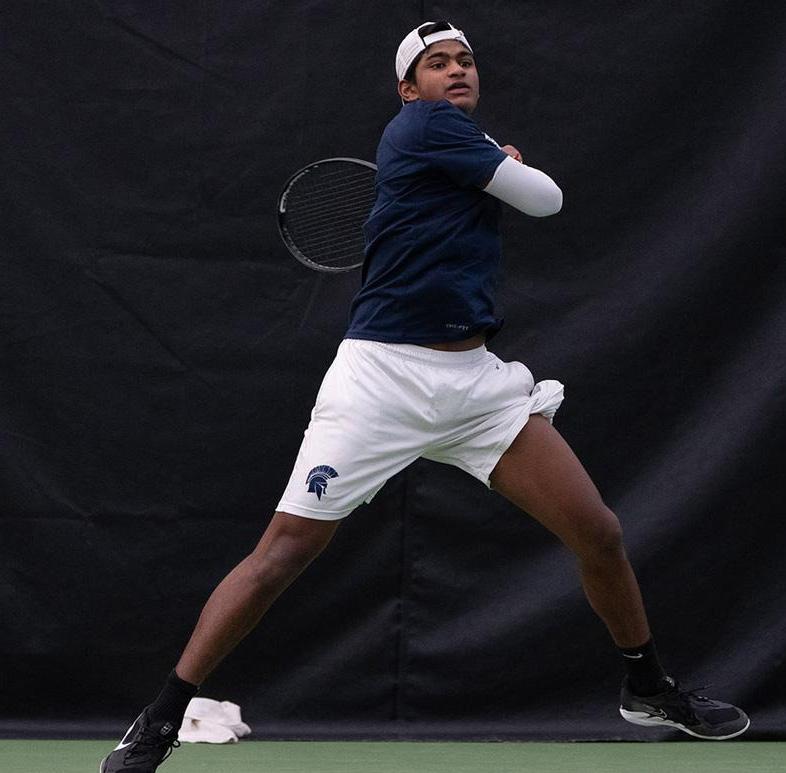
On Mar. 18, third-year Ajay Mahenthiran was named UAA Men’s Tennis Player of the Week after going 7-1 in singles matches during the CWRU’s men tennis team’s spring break trip. Courtesy of CWRU Athletics
Hardin-Simmons University 9-0 and Sewanee: The University of the South 8-1. Devaraj/Kosseifi, French/Narang and Aduru/Maza swept the doubles matches. Kosseifi won sixth singles 6-1, 6-1, and Shah took second singles 6-2, 6-0 to clinch the match. Against Sewanee, Dayal/Devaraj, Aduru/ Maza and French/Narang swept doubles. Though Sewanee took a point in second singles, the Spartans clinched
the match with victories in sixth, third and fourth singles. Shah was the closer in fourth singles with a 6-4, 6-2 victory.
The Spartans’ perfect run thus far came to a halt on the third day, dropping to the University of California, Irvine 0-7 and Westcliff University 3-4. Again playing with split squads, the Spartans’ top players struggled against DI opponent UC Irvine. Though the matches were somewhat competitive,
the Spartans got swept in the doubles and singles for the loss. Against Westcliff, second-year Matthew Plunkett/ Prochnow won 6-3 in third doubles, but CWRU lost in the other two matches. In singles, only Plunkett, Salazar Garza and third-year Ben Martin secured victories.
CWRU bounced back the next day, first defeating the Pomona-Pitzer Colleges 7-2. The Spartans were only able to claim third doubles, with French/ Narang winning 8-6. Pomona-Pitzer won first and second doubles 8-6. Those two losses didn’t matter as the Spartans swept all the singles matches to win the contest. The match against Chapman University was similarly close, with only Devaraj/Dayal winning a doubles match in second doubles 8-7 (1). Maza tied it 2-2 with a sixth singles 6-0, 6-1 win, but Chapman answered with a 6-2, 6-1 victory in first singles. However, Shah, Sutanto and third-year Ajay Mahenthiran won three straight matches to officially clinch the match for CWRU.
After a day off, the Spartans competed in the Stag-Hen Invitational. On the first day, they defeated Southwestern University 7-0 in the quarterfinals. However, the team fell to Bowdoin College 1-6 in the semifinals the next day. The Spartans lost all three doubles matches, with the sole point coming in the third singles as Mahenthiran took the game by retirement after splitting two sets 5-7, 6-1. The next day, CWRU defeated Babson College 7-0 to take third place in the invitational. After Aduru/Maza, Dayal/Devaraj and Narang/French swept the doubles, Aduru took first singles 7-6 (2), 6-1 to clinch the match.
CWRU will have almost two weeks off before they play the University of Northwestern Ohio and Wayne State University on March 29 in Lima, Ohio.
Spartan Southern Classic (3/10-15)
CWRU vs Oswego - W 7-3
CWRU vs Arcadia - L 1-9
CWRU vs Swarthmore - L 8-9
CWRU vs Trinity - W 11-8
CWRU vs Oswego - W 14-6
CWRU vs Ithaca - L 4-9
CWRU vs Oswego - W 19-1
CWRU vs Grove City (3/19) - W 10-6
CWRU vs UChicago (Nobby’s Ballpark)
3/23 - 2 games, noon; 3 p.m.
3/24 - 2 games, 11 a.m.; 2 p.m.
CWRU at Trinity (3/10) - L 4-5
CWRU vs Skidmore (3/11) - W 9-0
CWRU vs Wesleyan (3/12) - L 2-7
Blue Gray Invite
CWRU vs Southwestern (3/23)
CWRU at Mary Washington (3/24)
CWRU vs Gustavus Adolphus (3/25)
CWRU at Kenyon (3/29)
CWRU vs Bakersfield (3/10) - W 8-1
CWRU vs Ventura (3/10) - W 9-0
CWRU vs Hardin-Simmons (3/11) - W 9-0
CWRU vs Sewanee (3/11) - W 8-1
CWRU vs Westcliff (3/12) - L 3-4
CWRU at UC Irvine (3/12) - L 0-7
CWRU at Pomona-Pitzer (3/13) - W 7-2
CWRU at Chapman (3/13) - W 6-3
Stag-Hen Invitational (3/15-16)
CWRU vs Southwestern - W 7-0
CWRU vs Bowdoin - L 1-6
CWRU vs Babson - W 7-0
CWRU at Northwestern Ohio (3/29)
THE Spring Games (3/10-15)
CWRU vs Rowan - W 4-1
CWRU vs Coast Guard - W 10-2
CWRU vs Mount St. Joseph - W 2-1
CWRU vs Ohio Northern - W 4-2
CWRU vs Swarthmore - L 1-4
CWRU vs Haverford - W 8-4
CWRU vs SUNY Geneseo - W 6-0
CWRU vs Gettysburg - W 6-2
CWRU vs Catholic - W 11-3
CWRU vs Hope - W 6-5
CWRU at Wooster (3/23) - 2 games
CWRU vs NYU (3/29, 3 p.m., Mather Park)
NCAA DIII Championship
1st round: CWRU vs Mary Baldwin (3/1)W 66-51
2nd round: CWRU vs Hope (3/2) - W 97-79
Round of 16: CWRU vs Wisconsin-Platteville (3/8) - L 75-95